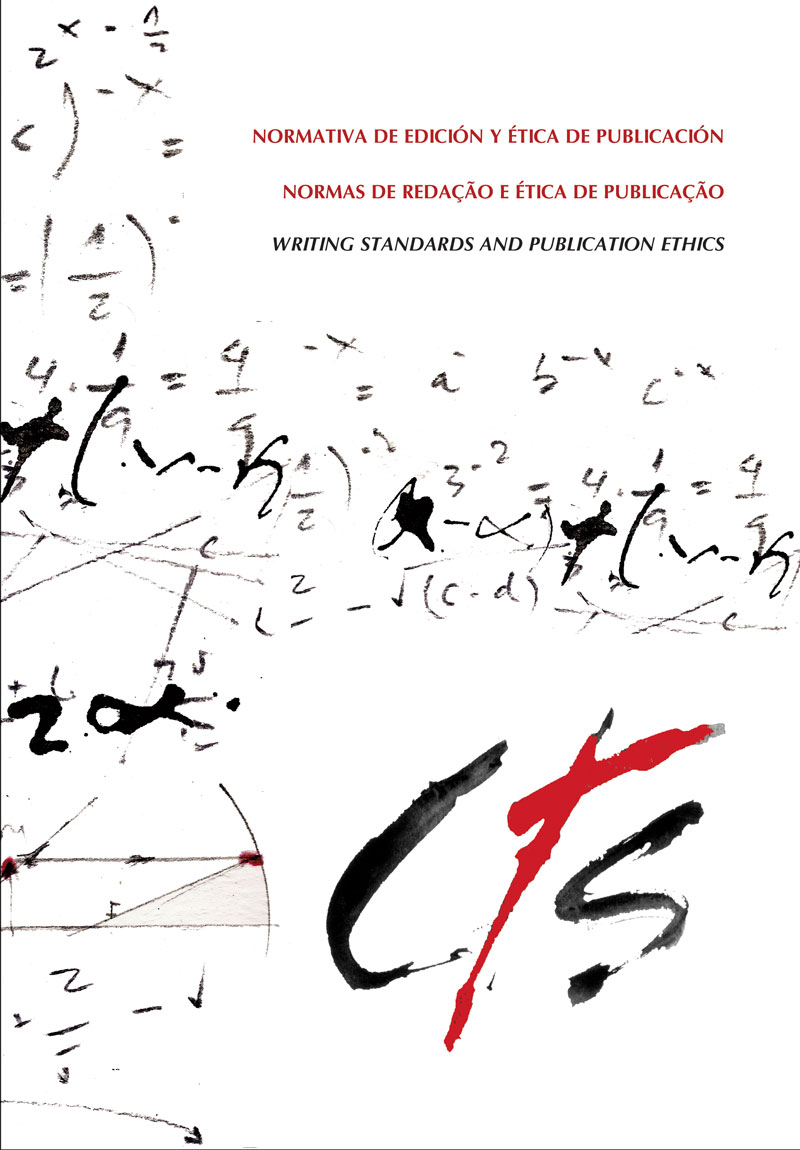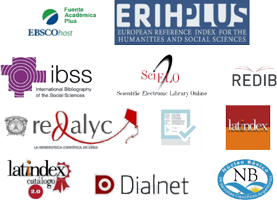Uma ciência da precaução é viável
Uma análise da influência da cautela na geração de conhecimento regulatório
DOI:
https://doi.org/10.52712/issn.1850-0013-425Palavras-chave:
ciência da precaução, princípio da precaução, regulação da ciência e tecnologia, ciência regulatória, avaliação de risco, avaliação de benefíciosResumo
Tradicionalmente, o “princípio da precaução” tem sido discutido na regulação da ciência e da tecnologia, um princípio que se opõe à regulação baseada apenas na avaliação de riscos. No presente artigo defende-se que, atualmente, devido ao estado de desenvolvimento que atingiu a regulação de produtos e processos científico-tecnológicos, poderia fazer sentido diferenciar, por um lado, o princípio da precaução e, por outro, uma ciência preventiva. Este último seria caracterizado por processos regulatórios cujo objetivo é gerir a incerteza através, por exemplo, da inversão do ónus da prova ou da vigilância pós-comercialização. A primeira, por outro lado, estaria focada em minimizar a incerteza, recusando-se a gerar informações sobre determinados processos e produtos científico-tecnológicos considerados potencialmente nocivos, procedendo diretamente à sua substituição por outros considerados mais benignos. Enquanto o princípio da precaução procura reorientar o desenvolvimento tecnológico, a ciência da precaução procura gerar conhecimento sobre as possíveis consequências dos produtos e gerir a aplicação de tais produtos de forma controlada.
Downloads
Referências
Blaauboer, B., Boobis, A., Bradford, B., Cockburn, A., Constable, A., Daneshian, M., Edwards, G., Garthoff, J., Jeffery, B., Krul, C. & Schuermans, J. (2016). Considering new methodologies in strategies for safety assessment of foods and food ingredients. Food and Chemical Toxicology, 91, 19-35.
De Sadeleer, N. (2007). Implementing the Precautionary Principle. Approaches from the Nordic Countries, EU and USA. Londres: Earthscan.
European Commission (2000). Communication from the Commission on the precautionary principle, COM 1 (2000). Bruselas: CE.
European Parliament and Council (2001). Directive 2001/18/EC (12/3/2001) on the deliberate release into the environment of genetically modified organisms. Official Journal of the European Communities, L106, 17/4/2001.
European Parliament and Council (2003). Regulation 1830/2003 on the traceability and labelling of genetically modified organisms (GMOs) and the traceability of food and feed products produced from GMOs. Official Journal of the European Communities, L268, 18/10/2003.
Funtowicz, S. & Ravetz, J. (1993). Science for the Post-Normal Age. Futures, 25, 739-755.
Gibbons, M., Limoges, C., Nowotny, H., Schwartzman, S., Scott, P. & Trow, M. (1994). The New Production of Knowledge: The Dynamics of Science and Research in Contemporary Society. Londres: Sage.
Hansson, S. (1997). Can we reverse the burden of proof? Toxicology Letters, 90, 223-228.
Hansson, S. (2020). How Extreme Is the Precautionary Principle? Nanoethics, 14, 245-257.
Hansson, S., Carlsen, L. & Tickner, J. (2007). Chemicals regulation and precaution: does REACH really incorporate the precautionary principle. Environmental Science & Policy, 10, 395-404.
Jiménez-Buedo, M. & Ramos Vielba, I. (2009). ¿Más allá de la ciencia académica? Modo 2, ciencia posacadémica y ciencia posnormal. Arbor, 185, 721-737.
Krewski, D., Andersen, M., Tyshenko, M., Krishnan, K., Hartung, T., Boekelheide, K., Wambaugh, J., Jones, D., Whelan, M., Thomas, R., Yauk, C., Barton‐Maclaren, T. & Cote, I. (2020). Toxicity testing in the 21st century: progress in the past decade and future perspectives. Archives of Toxicology, 94, 1–58.
Luján J. L. & Todt O. (2012). Precaution: A taxonomy. Social Studies of Science, 42, 143-157.
Luján, J. L. & Todt, O. (2018). The dilemmas of science for policy. EMBO Reports, 19, 194-196.
Luján, J. L. & Todt, O. (2021). Evidence Based Methodology: A Naturalistic Analysis of Epistemic Policies in Regulatory Science. European Journal for Philosophy of Science, 11, 1-19.
Michaels, D. (2008). Doubt is our product. Oxford: Oxford University Press.
Michaels, D. & Monforton, C. (2005). Manufacturing Uncertainty. American Journal of Public Health, 95(S1), 39-49.
National Research Council (2007). Toxicity Testing in the 21st Century: A Vision and a Strategy. Washington DC: National Acadamies Press.
Nowotny, H., Scott, P. & Gibbons, M. (2001). Re-Thinking Science. Knowledge and the Public in an Age of Uncertainty. Cambridge: Polity Press.
Raffensperger, C. & Tickner, J. (1999). Protecting Public Health and the Environment: Implementing the Precautionary Principle. Washington DC: Island Press.
Rechnitzer, T. (2022). Applying Reflective Equilibrium. Towards the Justification of a Precautionary Principle. Springer: Cham.
Rudén, C. & Hansson, S. (2010). Registration, Evaluation, and Authorization of Chemicals (REACH) is but a first step – How far will it take us? Six further steps to improve the European chemicals legislation. Environmental Health Perspectives, 118, 6–10.
Sunstein, C. (2002). Risk and Reason: Safety, Law and the Environment. Cambridge: Cambridge University Press.
Sunstein, C. (2005). Laws of fear: beyond the precautionary principle. Cambridge: Cambridge University Press.
Tickner, J. (Ed.) (2003). Precaution, Environmental Science, and Preventive Public Policy. Washington, DC: Island Press.
Todt, O. & Luján, J. L. (2014). Analyzing precautionary regulation: do precaution, science and innovation go together? Risk Analysis, 34, 2163-2173.
Todt, O. & Luján, J. L. (2017). Non-Cognitive Values and Methodological Learning in the Decision-Oriented Sciences. Foundations of Science, 22, 215-234.
Todt, O. & Luján, J. L. (2022). Rationality in Context: Regulatory Science and the Best Scientific Method. Science, Technology & Human Values, 47, 1086-1108.
Weinberg, A. (1972). Science and Trans-Science. Minerva, 10, 209-222.
Westmoreland, C., Bender, H., Doe, J., Jacobs, M., Kass, G., Madia, F., Mahony, C., Manou, I., Maxwell, G., Prieto, P., Roggeband, R., Sobanski, T., Schütte, K., Worth, A., Zvonar, Z. & Cronin, M. (2022). Use of New Approach Methodologies (NAMs) in regulatory decisions for chemical safety: Report from an EPAA Deep Dive Workshop. Regulatory Toxicology and Pharmacology, 135, 105261.
Wiener, J., Rogers, M., Hammitt, J. & Sand, P. (2011). The Reality of Precaution. Londres: Earthscan.
Downloads
Publicado
Como Citar
Edição
Seção
Licença
Copyright (c) 2024 CC Attribution 4.0

Este trabalho está licenciado sob uma licença Creative Commons Attribution 4.0 International License.
Todas os números de CTS e seus artigos individuais estão sob uma licença CC-BY.
Desde 2007, a CTS proporciona acesso livre, aberto e gratuito a todos seus conteúdos, incluídos o arquivo completo da edição quadrimestral e os diversos produtos apresentados na plataforma eletrônica. Esta decisão é baseada no entendimento de que fornecer acesso livre aos materiais publicados ajuda a ter uma maior e melhor troca de conhecimentos.
Por sua vez, em se tratando da edição quadrimestral, a revista permite aos repositórios institucionais e temáticos, bem como aos sites pessoais, o autoarquivo dos artigos na versão post-print ou versão editorial, logo após da publicação da versão definitiva de cada número e sob a condição de incorporar ao autoarquivo um link direcionado à fonte original.











